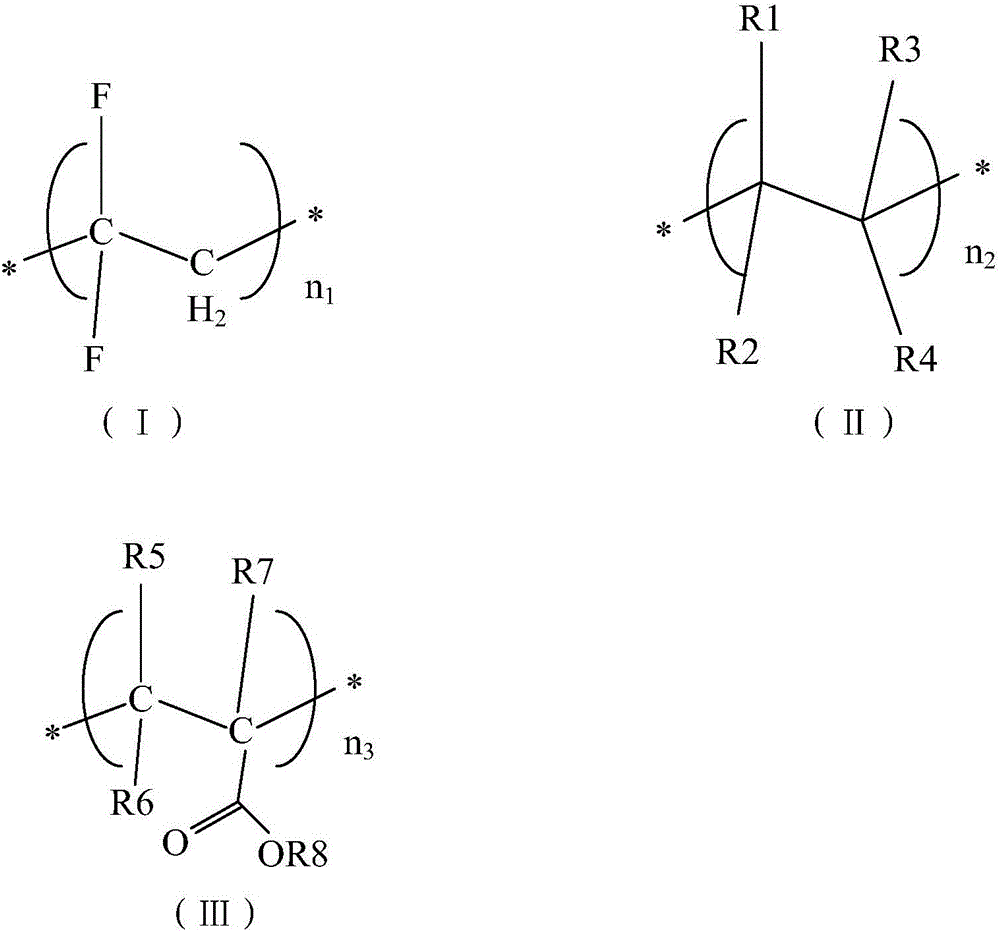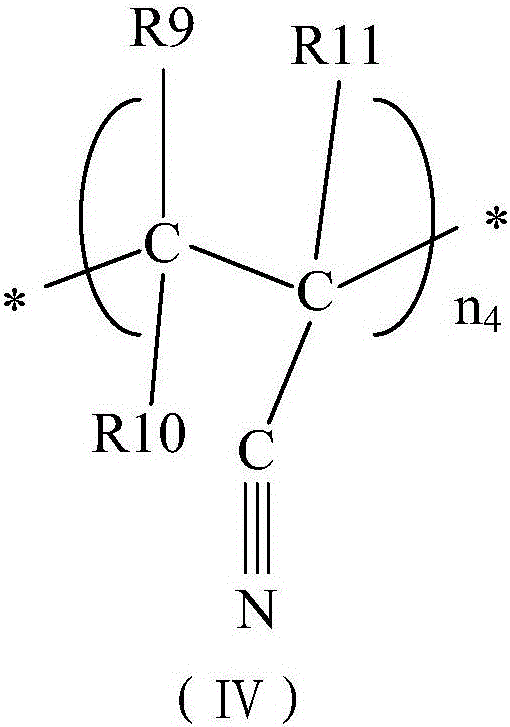Binding agent and lithium ion battery
A lithium-ion battery and binder technology, which is applied in battery electrodes, secondary batteries, circuits, etc., can solve the problems of high brittleness, fragmentation, and poor adhesion with aluminum foil, and achieve improved flexibility and adhesion. The effect of binding force and reducing impact
- Summary
- Abstract
- Description
- Claims
- Application Information
AI Technical Summary
Problems solved by technology
Method used
Image
Examples
Embodiment Construction
[0023] In order to make the purpose, features and advantages of the present invention more obvious and understandable, the technical solutions in the embodiments of the present invention will be clearly and completely described below in conjunction with the accompanying drawings in the embodiments of the present invention. Obviously, the described The embodiments are only some of the embodiments of the present invention, but not all of them. Based on the embodiments of the present invention, all other embodiments obtained by those skilled in the art without making creative efforts belong to the protection scope of the present invention.
[0024] When PVDF is used as a binder in the prior art, due to the low flexibility of PVDF, its adhesion with aluminum foil is poor, resulting in high brittleness of the pole piece, resulting in roll pressing, vermicelli, cutting pieces and rolls. Problems such as peeling, burrs, and fragments appear during the winding process, which seriously...
PUM
 Login to View More
Login to View More Abstract
Description
Claims
Application Information
 Login to View More
Login to View More - R&D
- Intellectual Property
- Life Sciences
- Materials
- Tech Scout
- Unparalleled Data Quality
- Higher Quality Content
- 60% Fewer Hallucinations
Browse by: Latest US Patents, China's latest patents, Technical Efficacy Thesaurus, Application Domain, Technology Topic, Popular Technical Reports.
© 2025 PatSnap. All rights reserved.Legal|Privacy policy|Modern Slavery Act Transparency Statement|Sitemap|About US| Contact US: help@patsnap.com



